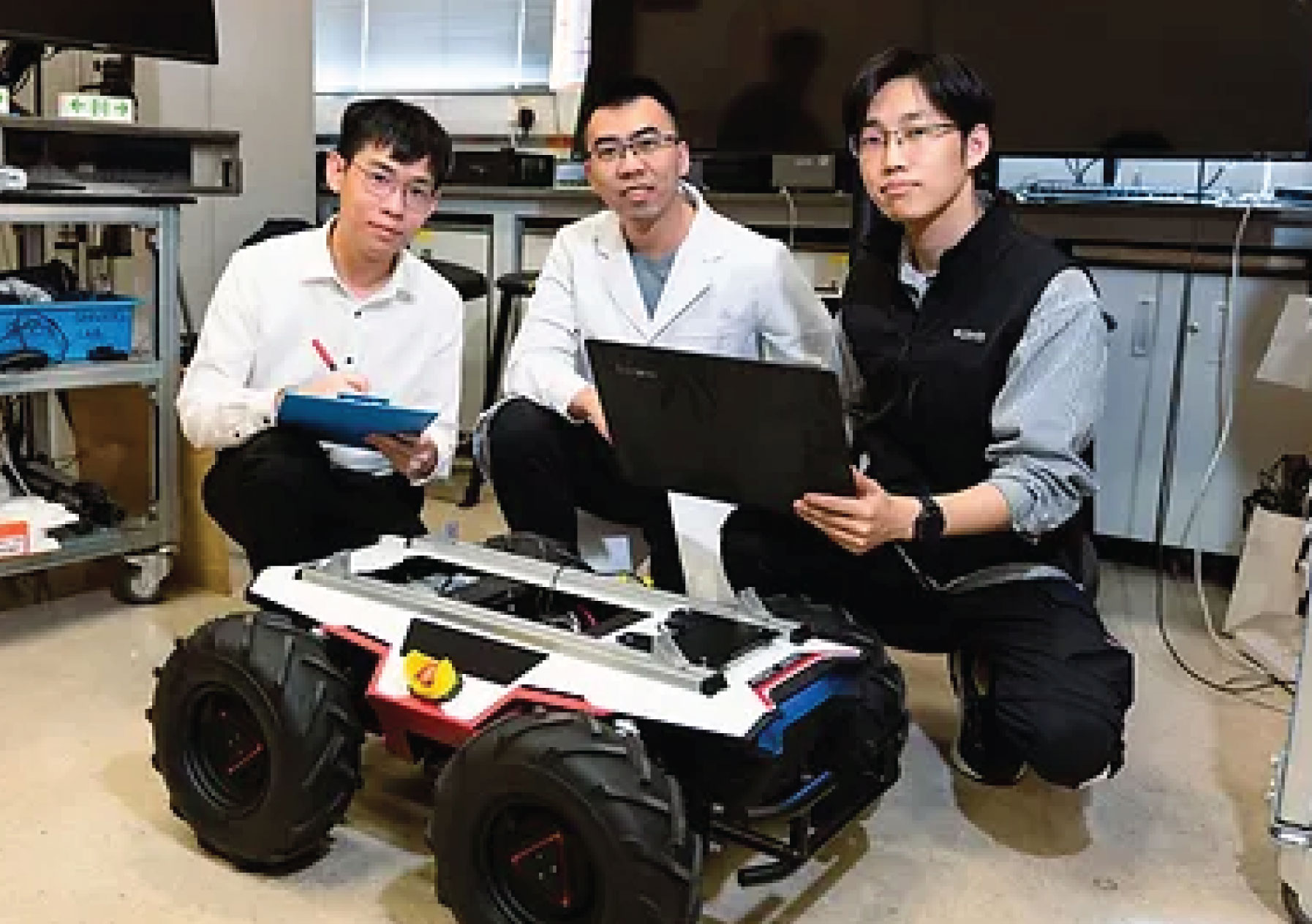Disastrous fire accidents continue to occur in Hong Kong, from the 1996 Garley Building fire to the 2016 Ngau Tau Kok mini-storage fire. Firefighters are left facing an unpredictable hazard. The application of robots in firefighting and rescue can not only reduce the situation of firefighters injured, but also help to improve the efficiency of firefighting and rescue. Smart firefighting robots developed by Wang Meng, using artificial intelligence technology and a variety of sensors, are able to realize autonomous operations when detecting and extinguishing fires, solving the shortcomings of existing remote-controlled robots. They can protect the lives of firefighters and the public and increase the efficiency of firefighting.

Mr. WANG Meng
PhD Student
Faculty of Construction and Environment
Department of Building Environment and Energy Engineering
Wang Meng gained insights into intelligent firefighting technology during his visit to the Fire Safety Laboratory. This includes the development of smart firefighting robots equipped with AI technology, sensors, and advanced capabilities to enhance firefighting efficiency and safety.
The introduction of a smart detection robot in the firefighting solution highlights Wang Meng's exposure to fire investigation techniques. The robot scans and reproduces map models for reference by firefighters, indicating a focus on improving methods for assessing and understanding fire situations.
The challenges faced in the development process, especially in algorithm development, indicate Wang Meng's engagement with complex problem-solving in fire engineering. Seeking guidance from experts like Dr. Wang Qixin suggests a focus on algorithmic solutions to enhance the performance of firefighting robots.
Wang Meng's collaboration with engineers to design a customized water cannon reveals a hands-on approach to overcoming challenges in the prototype development. This showcases his understanding of the importance of tailored equipment in addressing specific functional requirements for firefighting robots.
The collaboration with the Fire Services Department and access to the Fire and Ambulance Services Academy's compartment fire training site underscore Wang Meng's exposure to fire testing in controlled environments. This experience indicates an understanding of the importance of safety standards and testing protocols in the development of firefighting technologies.
Meng's transition from agricultural mechanization to mechanical engineering and later to building environment and energy engineering showcases his adaptive learning skills. Lifelong learners often explore diverse fields, gaining expertise and insights across disciplines.
Meng's engagement in the development of smart firefighting robots reflects his commitment to research methodology and innovation. Lifelong learners continuously refine their research skills and seek innovative solutions to address challenges.
Meng's active participation in entrepreneurial competitions and his effort to transform the research project into an industry demonstrate the development of entrepreneurial skills. Lifelong learners embrace opportunities to understand business aspects, including marketing, finance, and product development.
Embracing technologies such as 3D printing in the development phase of the firefighting robot signifies Wang Meng's commitment to incorporating advanced technologies. Lifelong learners stay updated on technological advancements and apply them in practical settings.
Meng's commitment to continuing the development of his PhD research project, assembling a team, and establishing a company demonstrates a dedication to continuous improvement and goal setting. Lifelong learners set clear goals, adapt them as needed, and persistently work towards achieving them.
The pursuit of knowledge is a lifelong journey! To further expand your knowledge and continue your personal and professional growth. Click and explore the following learning resources:
Intelligent Firefighting Technology
Algorithmic Solutions for Firefighting Robots
Fire Testing and Safety Standards
Research and Information Literacy